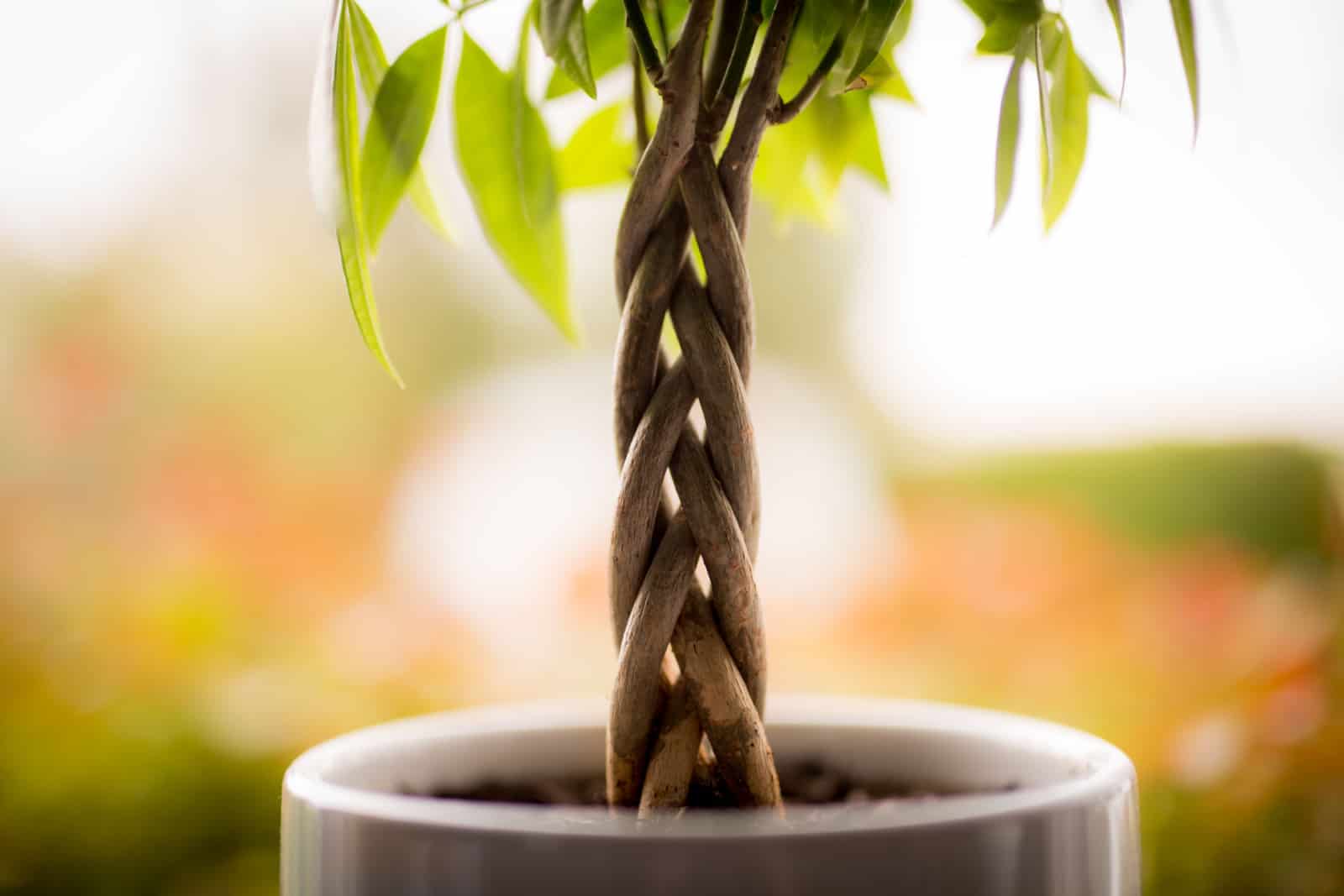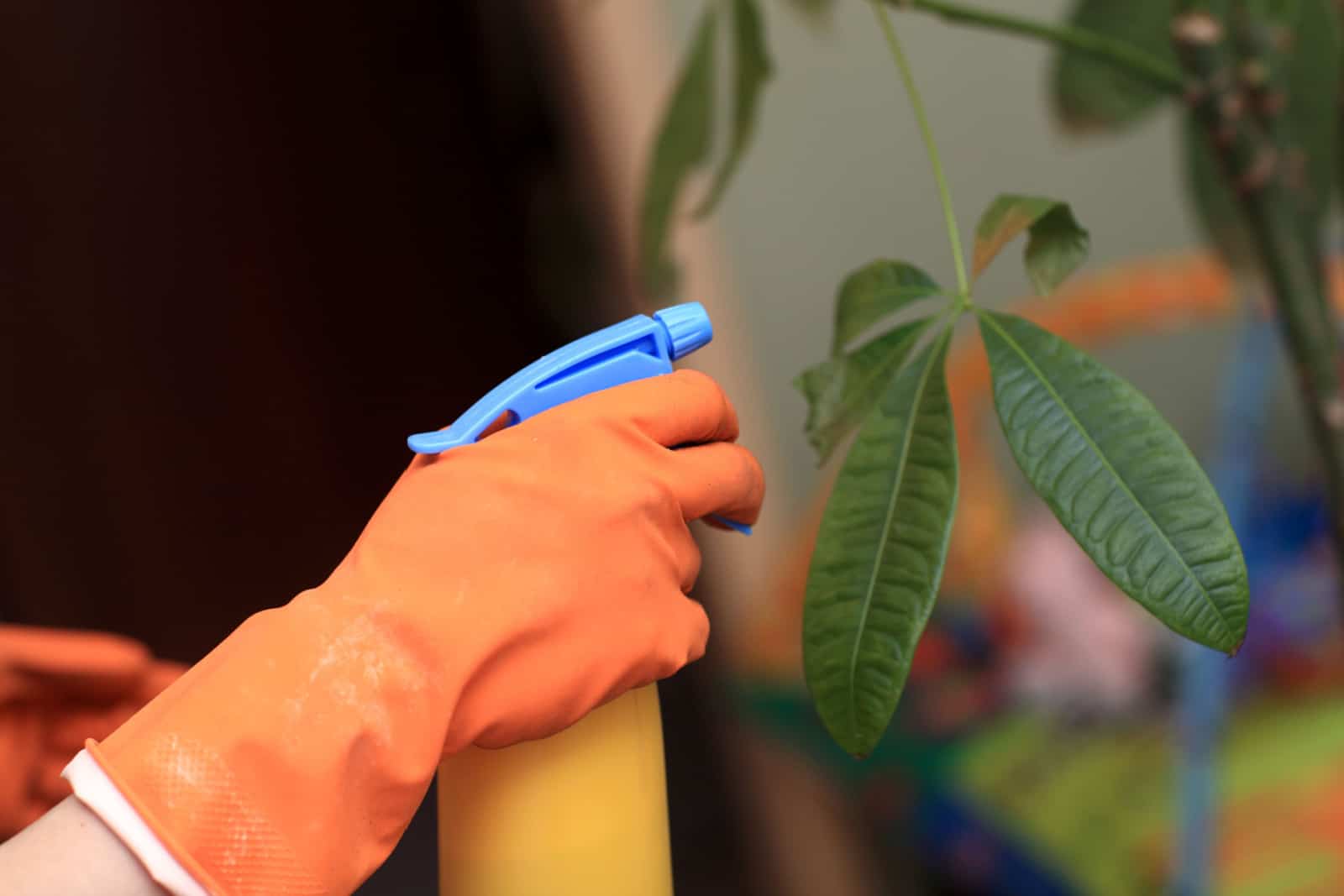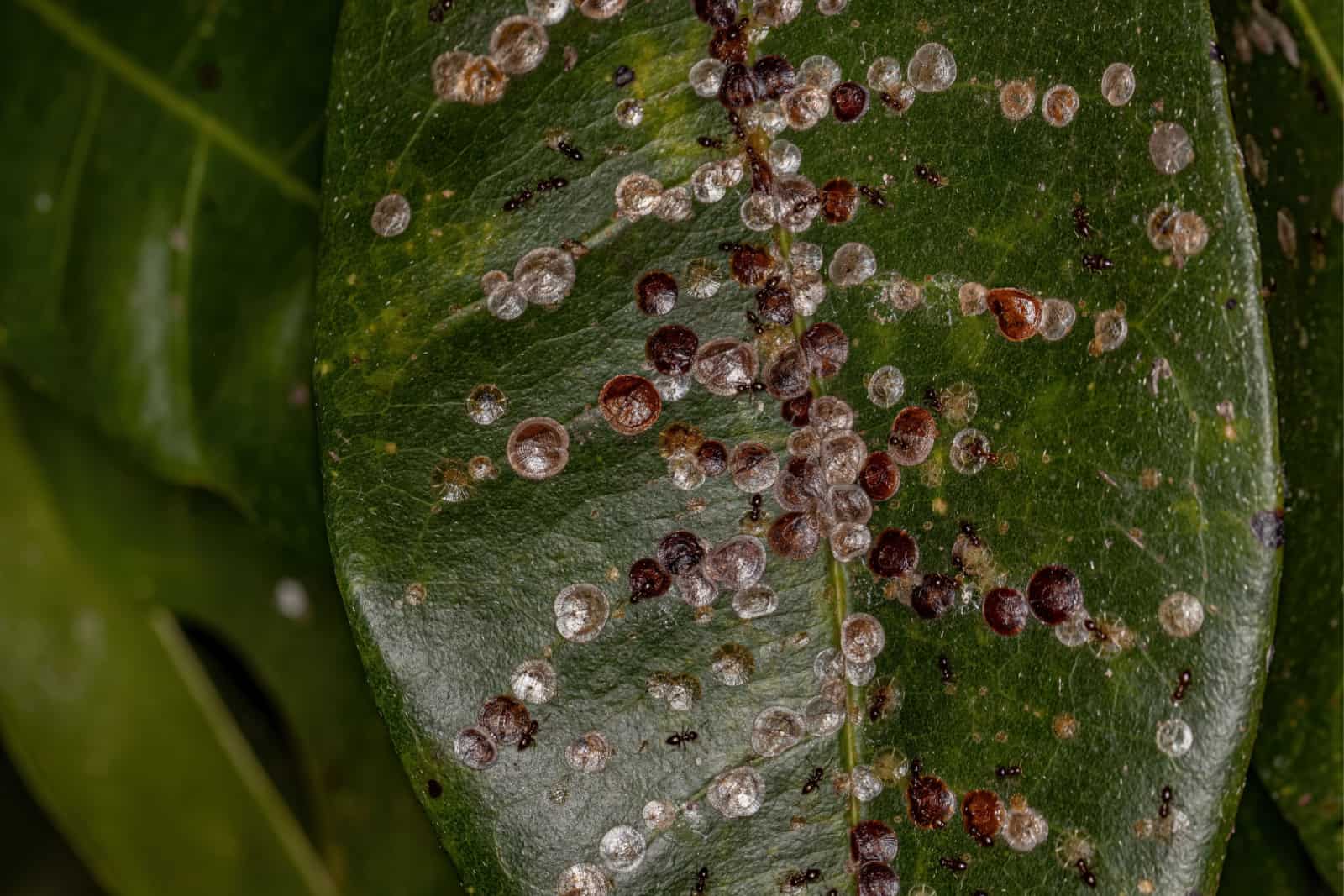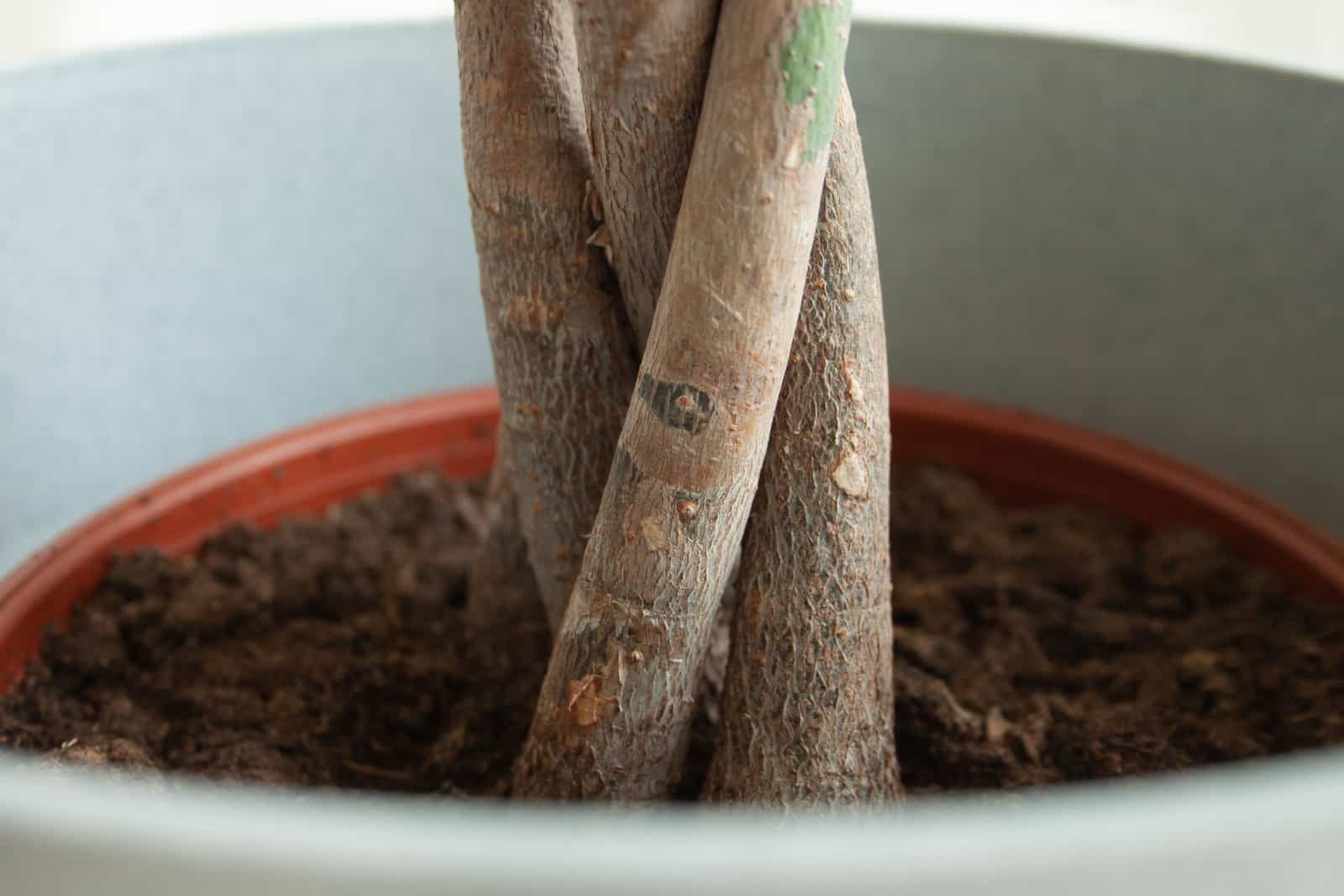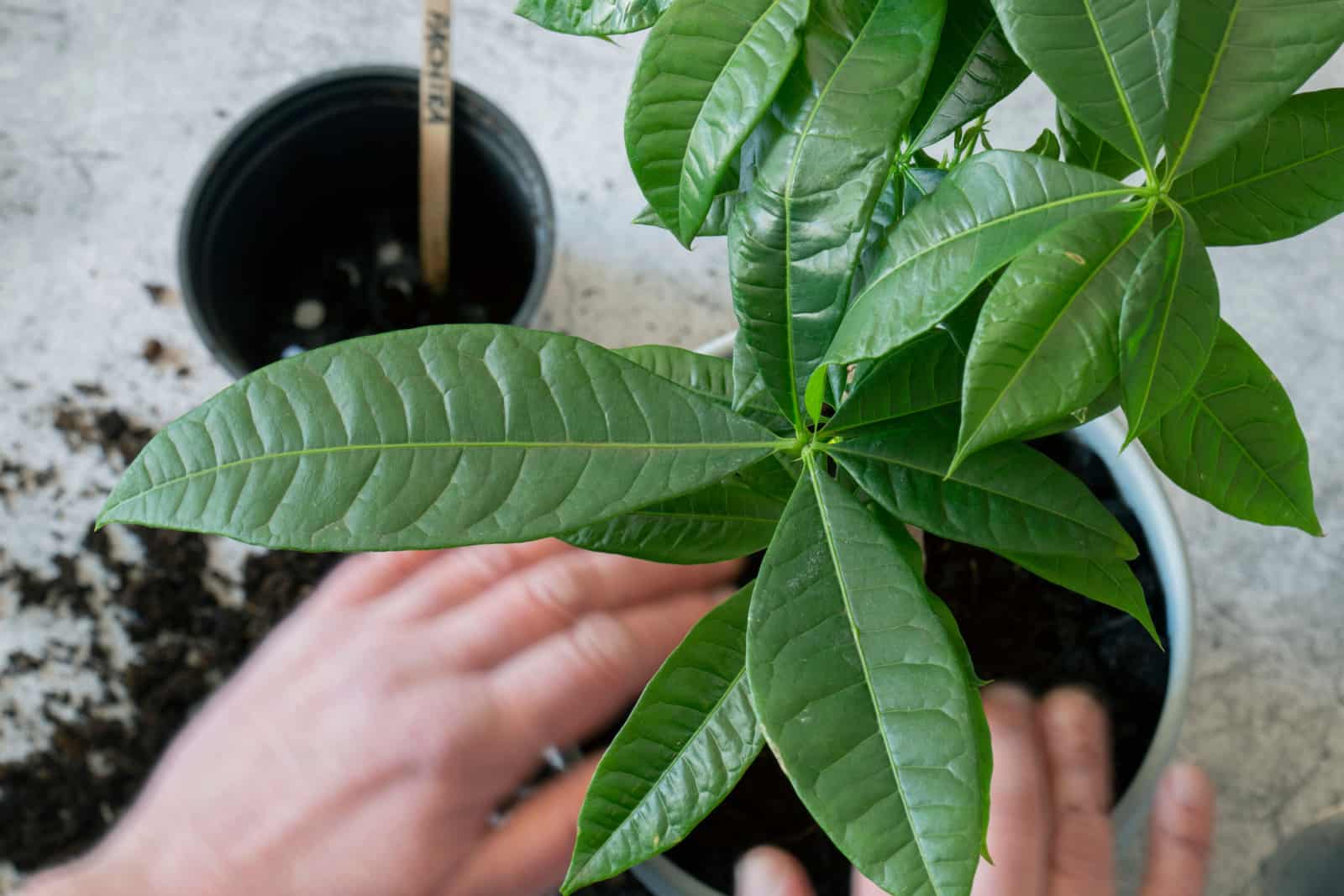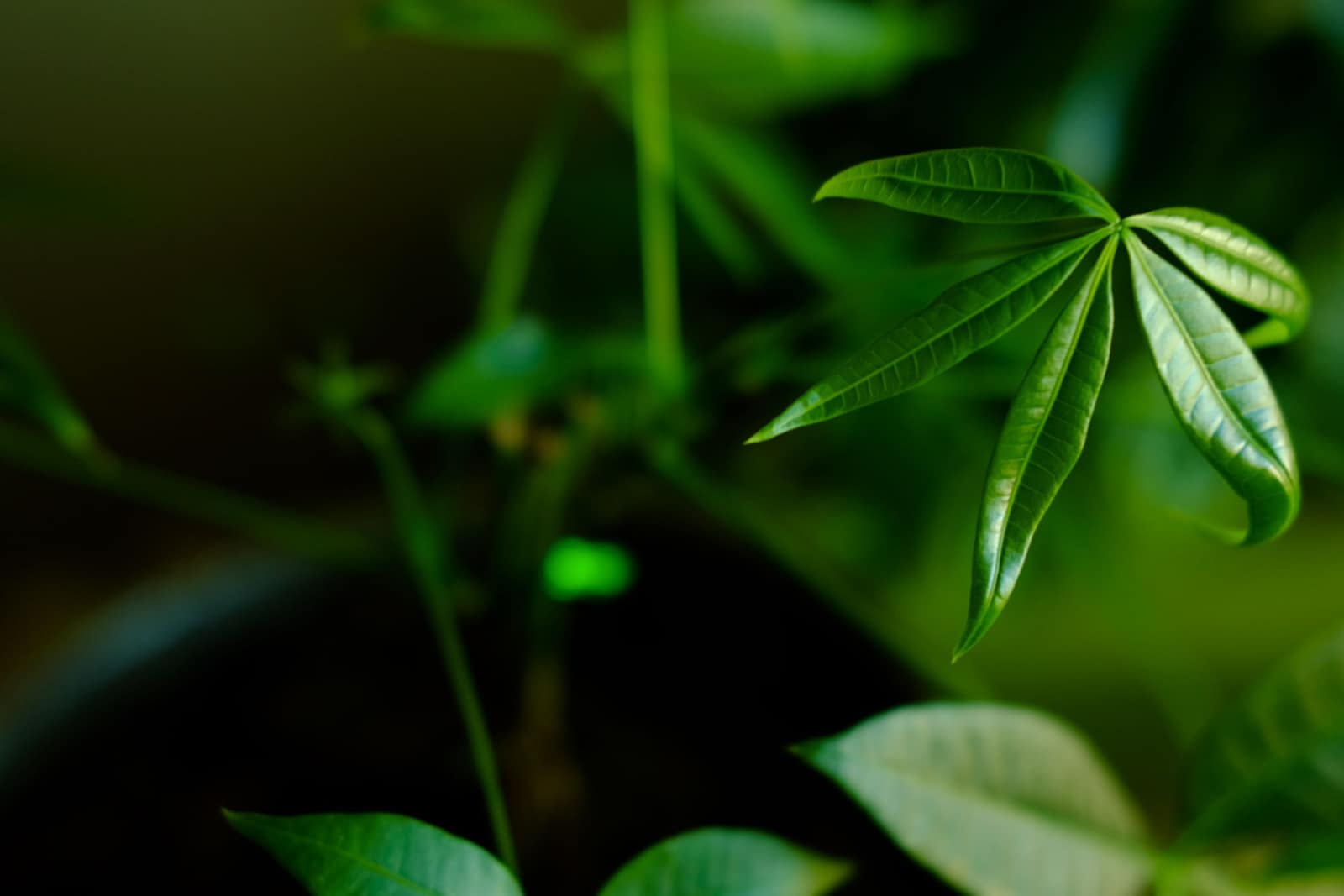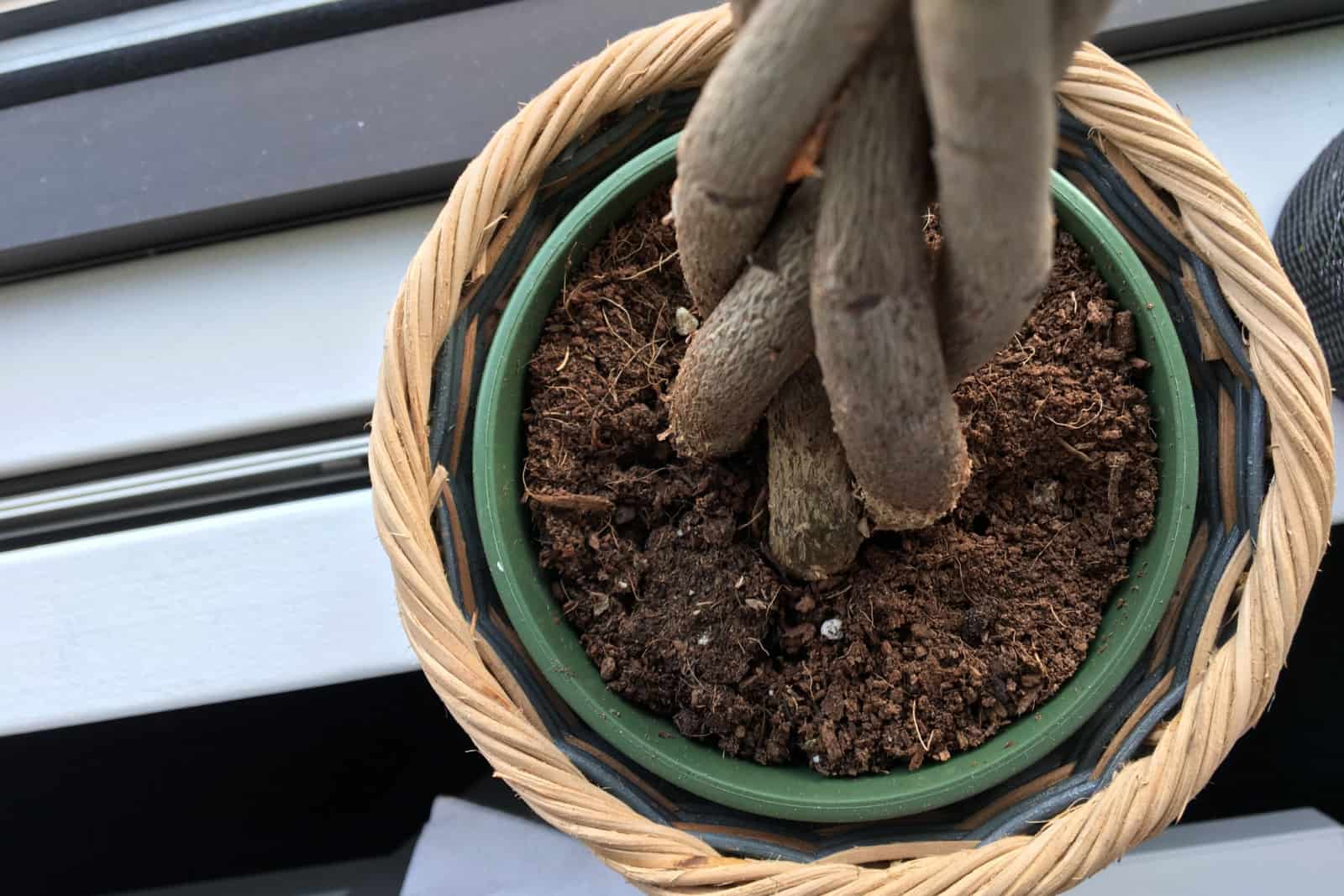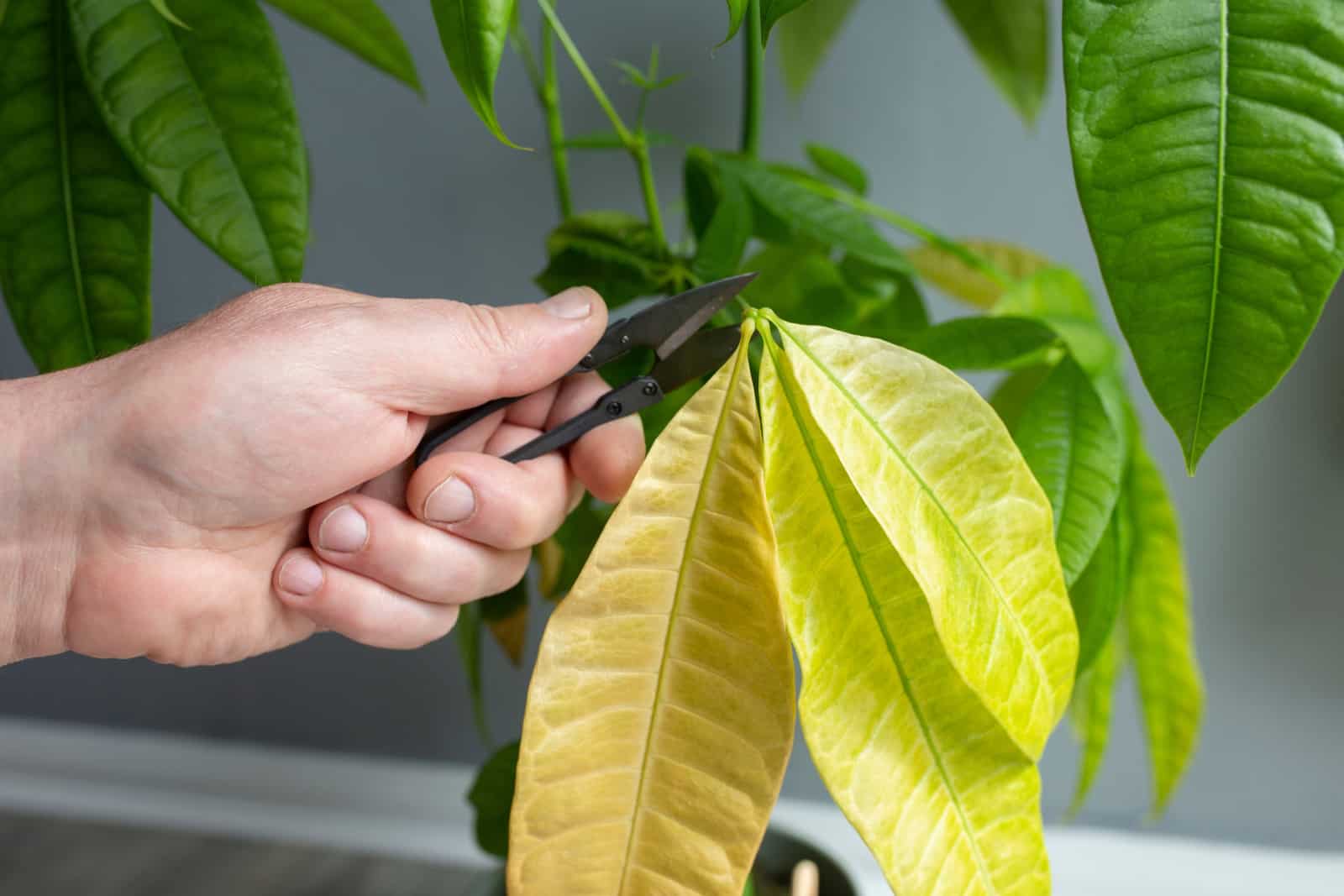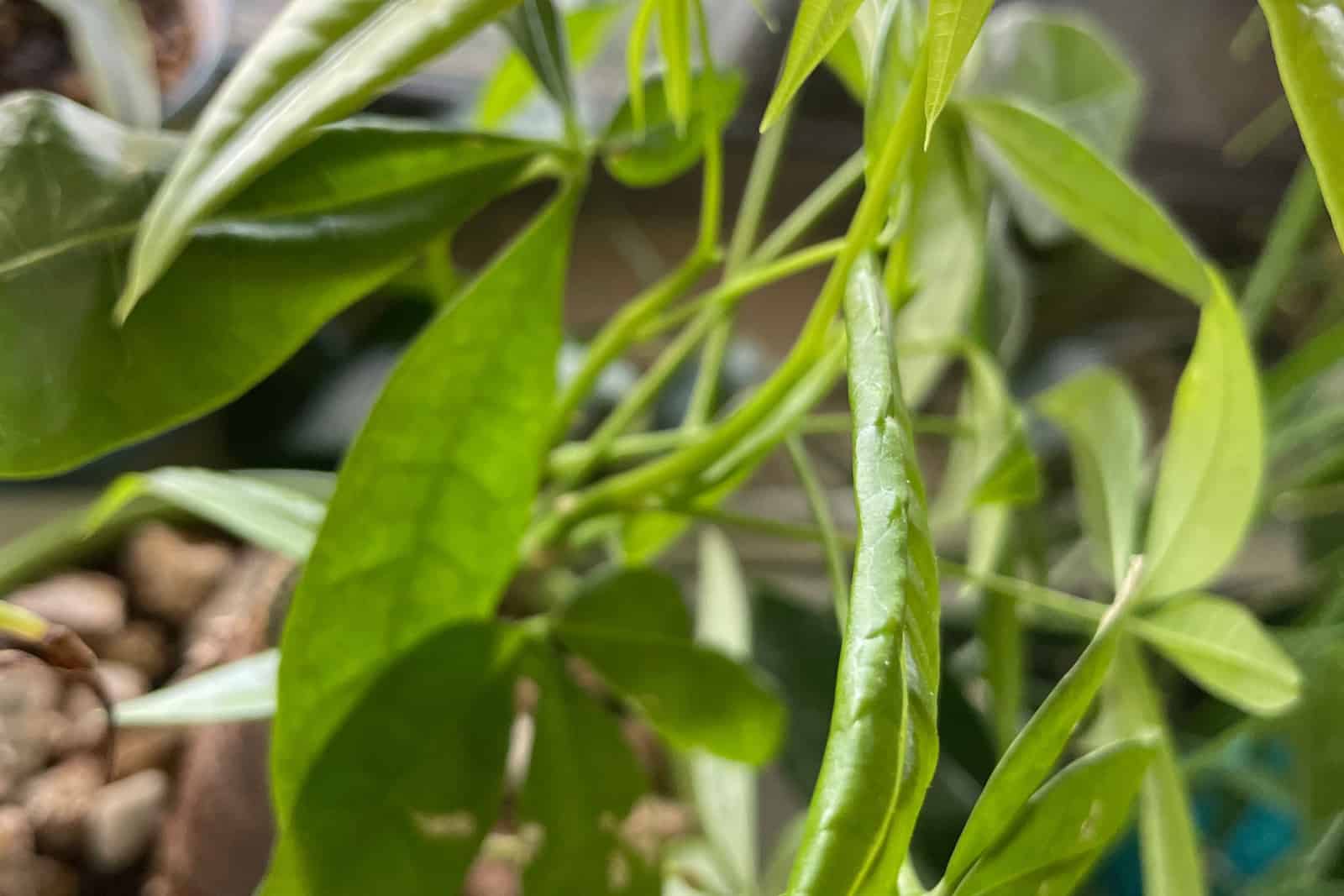The money tree, otherwise known as the Pachira aquatica, is a popular tropical plant that is relatively easy to take care of. Even though this plant is not needy, there are still some conditions that have to be provided in order for it to thrive.
Inadequate growing conditions might lead to many problems, including Money tree leaves turning brown. For instance, too much sun exposure, temperature stress, inadequate watering, and even overfertilization can cause browning of the leaves.
Luckily, there are ways to save your plant and make it look as good as new!
Keep reading to find out more about the possible causes of leaf browning and how to fix them.
Possible Cause: Too Much Sun Exposure
Most tropical plants grow under tall trees, where they are not exposed to direct sunlight. So, if you put your plant in a place where it is exposed to direct sunlight for too long, the leaves may start looking brown and crispy.
On the other hand, low light settings might lead to pale and yellow leaves. In this case, leaves rarely turn brown. However, it is good to know in case you end up with pale leaves!
Solution
Unfortunately, there is nothing that you can do to save sunburned leaves. The best thing to do is simply relocate your plant.
Money trees thrive in bright indirect sunlight. The best place to put it would be next to a south-facing window. I would suggest you rotate the plant regularly so that every part of it gets enough sunshine.
If you don’t have enough space next to a south-facing window, you can put it somewhere else, just make sure that it doesn’t receive too much direct sunlight throughout the day.
Possible Cause: Inadequate Watering
Inadequate watering can lead to both overwatering and underwatering.
If you are giving your Pachira aquatica too much water, the soil will become waterlogged. Lack of oxygen in waterlogged soil is the main issue. Like all tissue, underground roots need oxygen to breathe.
Therefore, your plant will only end up suffocating if you give it too much water. Overwatering can also result in Money tree root rot, a deadly fungal disease that can completely ruin your plant.
On the contrary, if you don’t give your plant enough water, the soil will get highly compacted and your plant will become droopy.
Underwatering is characterized by browning leaf tips, while overwatering usually leads to yellowing of the leaves, which eventually turn brown.
Solution
The first thing you should do is determine if you have been overwatering or underwatering your plant. Try to remember how often you watered your Money tree or check if the soil is wet.
If you have been overwatering, you should check the roots first. If the roots have started rotting, you should remove the affected ones and repot the plant. Use fresh soil and a new pot, but also apply fungicide. Hydrogen peroxide can also serve as a fungicide [2].
You should start and stick to a different watering schedule. Ideally, you should only water the plant once the top few inches of the soil have dried out. This is why you should always check the soil before watering.
Improving drainage by adding perlite or other soil additives, as well as growing the plant in a pot with drainage holes, can help prevent overwatering.
You should also consider the type of water you are using for your Pachira aquatica. Distilled or filtered water is the best water for your plant.
If the issue is underwatering, your plant needs a good soaking. You can use a watering can, just make sure that the leaves don’t get wet (this is why most plant parents practice bottom watering).
Your Money tree won’t need as much watering during the winter season as it does during the summer because the plant enters dormancy.
Possible Cause: Pest Infestation
I bet that almost every gardener has dealt with a pest infestation before. These sneaky pests can crawl all over your plant, stealing its minerals and nutrients. If the infestation is severe, your plant might deteriorate.
The most common pests that pay your Money tree a visit include spider mites, aphids, mealybugs, fungus gnats, and scales.
Check the undersides of the leaves first. If you notice any sticky substances, webbing, or little brown spots on your Money tree, then you are dealing with a pest infestation.
Spider mites are pests that usually stay on the undersides of the leaves and produce webbing. Mealybugs cause white leaf spots on the leaves, and scales create honeydew, a gooey material that collects on stems and leaves.
Solution
As soon as you notice that your plant’s leaves have started turning brown, immediately inspect it for pests. If you notice any of the abovementioned signs, I would recommend that you isolate the plant in order to avoid spreading the infestation.
If the infestation isn’t too severe, you can either manually remove the insects by picking them off one at a time or wiping them away with a cotton swab drenched in rubbing alcohol.
In the event that a colony has already developed and you need to get rid of the pests naturally, you can place the plant under a stream of water. To avoid harming your plant, don’t let the water flow too quickly.
Another excellent natural option for pest control is the use of horticultural oils like neem oil. Be careful when applying to avoid the neem oil burning the leaves.
Lastly, you can always try and use pesticides or insecticidal soaps.
Possible Cause: Overfertilization
Every plant requires fertilization from time to time to promote new growth and the development of leaves. Your plant can benefit from additional salts and chemicals, but if you fertilize too frequently, the soil will become clogged with salts and chemicals.
Very high salt concentration in the soil solution will lower its osmotic potential and restrict water absorption, which can result in leaf dehydration, stomatal closure, decreased photosynthesis, leaf damage, and plasmolysis of root cells [3].
Overfertilization can cause bottom leaves to become yellow, a white crust to form on the soil’s surface, stunted development, and brown, crispy edges on the leaves.
Solution
Fortunately, overfertilization can be easily fixed. You simply need to water the plant well and allow the water to flow out through drainage holes to fix this issue. All the extra salt in the soil will be gone in no time!
Following this, carry on with routine plant maintenance, but refrain from fertilizing because the soil probably still contains some nutrients.
You might also want to think about applying fertilizers less frequently and switching to organic ones. Always dilute the fertilizer and stick to the directions on the container. Just in case, you can use half suggested dosage when fertilizing plants for the first time.
Please be aware that since these plants go into dormancy in the winter, you shouldn’t apply any fertilizers during that time.
Possible Cause: Transplant Shock
Your Money plant may undergo transplant stress when you repot it. This is entirely expected given that these plants are delicate and take some time to adjust to their new surroundings.
After transplanting, you might assume that they require watering because the plant is droopy and the leaves are turning brown (symptoms similar to underwatering), but this is not exactly the case.
Solution
Don’t worry, it is perfectly normal for your plant to act like this after repotting. Just repot it in a container with drainage holes and place it back in the same spot. It won’t be able to handle the pressure of both moving and repotting at once!
After transplanting, give the plant plenty of water before continuing with regular plant maintenance.
Possible Cause: Temperature Stress
As there is no winter season in tropical areas, keeping your plants in low temperatures can be detrimental to them. Nevertheless, severe heat and exposure to the sun are also not recommended.
Your plant will stop growing if the temperature falls below 30 degrees Fahrenheit, and it will also be damaged by the cold. Both younger and older leaves can be impacted by this, though younger leaves are more delicate and susceptible to temperature stress.
In addition, keeping your plant next to a drafty area such as a vent might also cause temperature stress. This results in leaves turning yellow, brown, and crispy.
Solution
Money trees thrive in temperatures between 60 to 80 degrees Fahrenheit. They are not frost-tolerant and will be affected by sudden temperature changes.
Make sure to find a perfect location away from direct sunlight or cold drafts. Also keep them away from heat sources such as fireplaces or radiators.
Possible Cause: Natural Aging
Leaves turning brown as a result of natural aging is inevitable. This just means that those old leaves are spent. They usually appear on the top of the plant.
Don’t worry, this doesn’t mean that your plant is near its end – Money trees can live up to 15 years or more!
Possible Cause: Plant Diseases
Most fungal diseases cause Money tree leaves to turn brown or yellow. As well as root rot, other fungal diseases that could affect your plant include leaf spot, anthracnose, and powdery mildew.
Clusters of yellow spots on the leaves with a black or brown fungal dot in the center are a sign of leaf spot infection. If you notice any white patches on the leaves that resemble snow or dust, you almost certainly have powdery mildew. Leaves that are not treated will turn yellow and fall off.
Yellow patches on the leaves are the first symptoms of an anthracnose infection. Eventually, the leaves will turn brown or yellow and drop off.
Solution
In case you are dealing with powdery mildew, you can spray your plants once a week with a solution of 1 part milk to 5 parts water for as long as the fungus is present. Neem oil or copper fungicide can also be employed.
Prune the affected leaves to avoid spreading the infection. You will have to improve airflow around your plant and be careful when watering.
Is There Any Way To Make Brown Leaves Turn Green?
Sadly, there is no way that brown leaves will turn green again. However, I would recommend you prune the leaves that have turned brown so your plant will look more neat and tidy, and focus its energy on producing new leaves!
Wrapping Up
Money tree leaves turning brown can truly be a bummer, especially if you have just bought a new plant. The first thing that you should do is figure out what’s causing the leaves to turn brown, and then find the perfect solution to it.
If your plant is in direct sunlight, move it to a different location. If you are dealing with pests, use neem oil or pesticides. It could also be that the plant is simply aging naturally.
I’m sure you will figure it out and get your plant to look as good as new!
I hope this article was helpful.
Until next time!
References:
1. P.J. Hogarth (2017). Mangrove Ecosystem. ScienceDirect
2. Hydrogen peroxide (Hydrogen dioxide) (000595) Fact Sheet. Environmental Protection Agency (EPA)
3. Kozlowski & Pallardy (1997). Cultural practices and Vegetative growth. ScienceDirect

